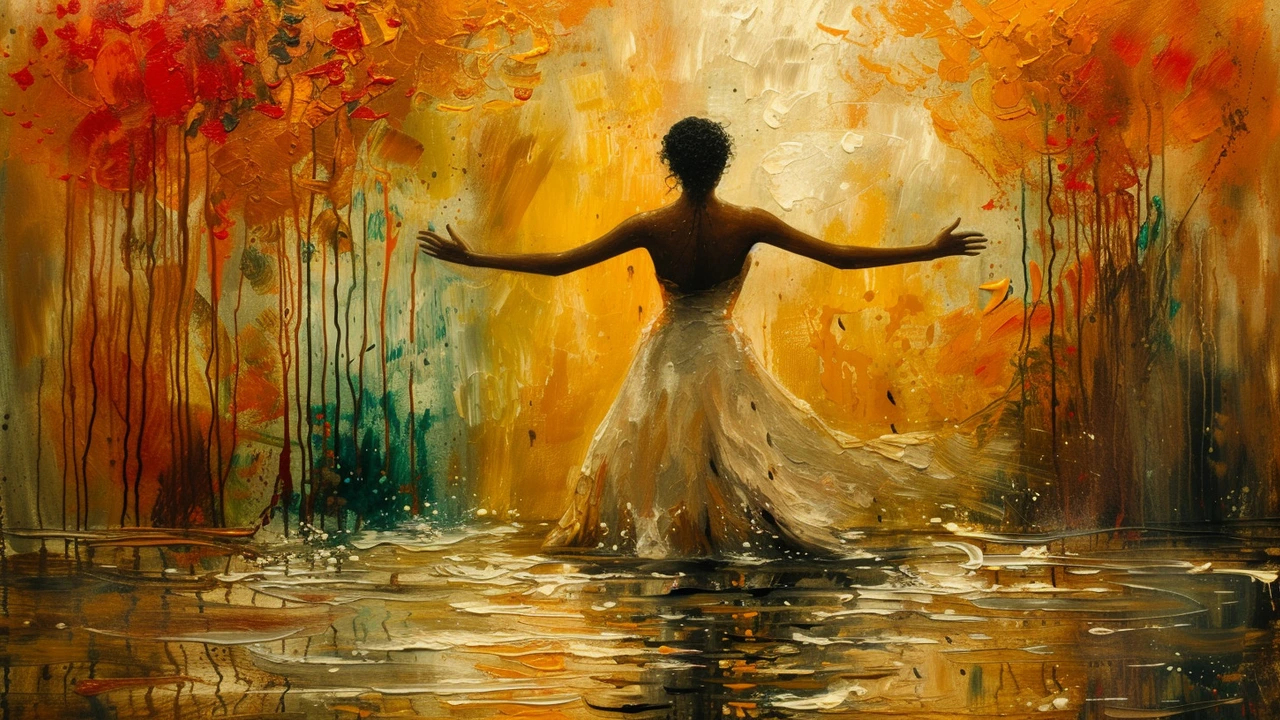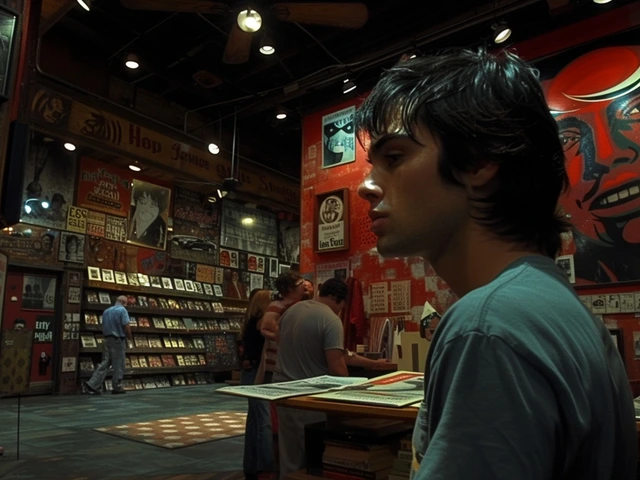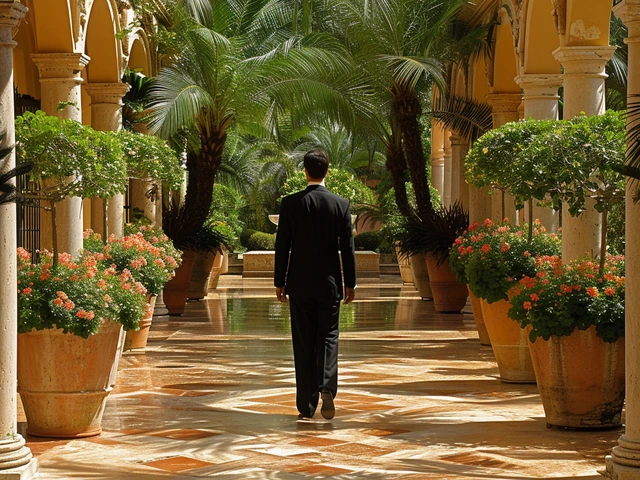The Essence of Performance Art
Ah, performance art, the enfant terrible of the artistic world! It's that unapologetic and often misunderstood form of expression that prances around the conventional and makes a beeline for the intriguingly bizarre. Why are we so fascinated by it, you ask? Perhaps it's its raw power to convey messages without the safety net of canvas or clay. One can't simply 'hang' performance art on a wall or place it on a pedestal – it's living, breathing, and as temporary as a sandcastle at high tide, yet its impact can leave an indelible mark on the audience.
I remember the first time I was swept away by the maelstrom of a performance piece. I was just a young thing, a fledgling artist, eager to make my own splashes of color in the world. As I stood amidst a throng of onlookers, I witnessed an artist transform pain into beauty, right before my very eyes. The performance was visceral, evoking emotions that simmered below the surface – like a pot about to boil over, it stirred something within me. Fast forward to the present day, where I watch my own little ones, Elliot and Seraphina, unleashed in their innocent play – it's pure performance art, unscripted and profoundly impactful.
Defining Performance Art
So, what exactly is performance art? Imagine painting, but instead of a brush, you have the performer’s body, and instead of a canvas, you have the space around them – the air is their medium, the ambiance their palette. It is a live presentation, where the artist uses their physical being to bring some sort of a concept to life. This genre defies the confines of the traditional and catapults both the performer and audience into a realm where anything goes.
The historical roots of performance art can be traced back to the early 20th century. It emerged as an avant-garde movement, a rebellion against the confines of established art forms. Artists like Marina Abramović, often referred to as the "grandmother of performance art," and Chris Burden pushed boundaries and buttons with their bold explorations. They paved the way for a form of communication that's as dynamic as a Shakespearean soliloquy, yet unbound by words or stage.
The Personal Connection with Performance
Performance art's chameleon-like nature allows it to slip into the skins of myriad themes, be it political, social, or deeply personal. This is where the intimacy lies; it cocoons the observer in a shared experience, a fleeting encounter that makes you feel you're a vital part of the artwork. It invites, or often demands, a visceral reaction – you can't just passively scroll past it on your phone!
There's a story of mine nestled here, about the tug of war between art and parenthood. When Seraphina was a tottering toddler, I attempted performance art as a form of therapy, to rediscover myself amidst the nappies and sleepless nights. With Elliot perched on my hip, I ‘performed’ mundane motherhood tasks with exaggerated, theatrical flair, transforming them into a spectacle, a triumphant fanfare to the unsung heroics of parenting. Surprisingly, or maybe not, those moments bonded us in a shared ritual of love and laughter.
Unconventional Spaces for Unconventional Art
Here's where things get interesting. Performance art doesn't bow to the white-walled galleries or the silent reverence often accorded to more stationary art. It thrives in the pulsating heart of city streets, in the quiet decay of an abandoned building, or even in the digital labyrinth of the Internet. It spills out – livid, laughing, crying – into the spaces of our everyday lives, turning the world into an unwitting gallery.
Imagine a busy urban corner suddenly frozen in time by a 'freeze mob' or the haunting echo of a poem recited in an empty warehouse. My kids and I once stumbled upon a group of performers enacting a silent narrative against the backdrop of a graffiti-laden alleyway – an unexpected dash of drama to brighten a mundane grocery run. It was breathtaking, like finding a secret garden in the crevice of a concrete jungle.
Tips for Dipping Your Toes into Performance Art
Now, before you sprint off to the nearest public square to express your innermost feelings through interpretive dance, let's wade through some groundwork. First, explore! Exposure to different styles is imperative to understand the multifaceted personality of performance art. Watch videos, attend live shows, and if you're feeling exceptionally adventurous, consider participating in a workshop or two.
Also, remember to engage. Be present, allow yourself to react and interact. And when the moment comes for you to craft your own performance, be fearless. Embrace the vulnerability, celebrate the spectacle of authenticity. Trust me, the first time I attempted a public rendition of my 'motherhood manifesto,' it felt like stepping off a cliff, but the thrill was exhilarating – and no one called the police!
Developing Ideas and Concepts
Ideation in performance art is like planting an apple seed and watching it mutate into an orange tree – unpredictable but fascinating. Begin with a thought, a feeling, something you wish to convey or explore. Don't be dismayed if it morphs as you develop it; this is the chrysalis stage – messy, gooey, and transformative. Your mission, should you choose to accept it, is to nurture this idea, let it flow through your actions and ooze out to your audience.
My children, with their boundless imagination and disregard for the impossible, are a constant reminder of the creative process's fluidity. Elliot once crafted an entire epic about a dragon who was allergic to fire – a paradox, right? Yet, it taught me that concepts needn't be shackled by the probable. It can be freeing to let your ideas breathe, and from there, watch the magic unfurl.
The Body as a Canvas
In performance art, your body is more than mere flesh and bone; it's the pen with which you write your manifesto. Through gesture, through movement, even in stillness, you articulate your message. Communication in this art form transcends verbal language – whether you're contorting, pacing, or enveloped in absolute motionless, your body echoes your inner narrative.
Embarking on a journey through the body’s expressive capabilities reminds me of the time I tried translating the chaos of my mind into a tableau vivant, with Simplicity running a back-and-forth marathon between Temperance and Excess. My body morphed into the battleground for these abstract entities, and trust me, balancing the contrast of these principles felt like a full-body workout!
Materials and Props in Performance Art
Now, let’s not forget the ensemble cast of objects and materials that often play a pivotal role in performance art. They're not mere accessories; they carry symbolism, they're extensions of the performer, enhancing the narrative. Imagine Yoko Ono's 'Cut Piece,' where the snip of each scissor blade was as laden with meaning as a word in a poet’s stanza. These objects can elevate the performance, creating layers of texture and depth within the live canvas.
Props are akin to the spices in my culinary adventures – with Elliot and Seraphina as my eager sous-chefs, each ingredient we add can turn our simple stew of family fun into a complex, aromatic curry of expression. Likewise, in performance art, choosing the right item can amplify your message. Whether it's a chair symbolizing power or a feather representing fragility, each prop should be mindfully incorporated into your visionary feast.
Interacting with the Audience
Ever been to a performance where the artist suddenly locks eyes with you, and you sense a sizzling wire of connection? That's the electric charge of audience interaction in performance art. Crafted correctly, these moments can transform passive viewers into active participants. The audience can become co-creators, adding their own texture to the tapestry of the performance, making it a kaleidoscopic experience.
During an outdoor performance I witnessed while lounging at a park, an artist handed me a balloon and motioned me to release it into the sky as a part of their piece. The collective release of balloons became a poignant statement about letting go, an act multiplied by the number of hands that set them free. It prompted a shared reflection among strangers in a simple yet profound ceremony of unity and release.
The Aftermath of a Performance
The crescendo has been reached, the final pose held, the echoes of the audience's reactions have faded into silence. What remains after a performance art piece is an afterglow, the lingering whispers of art that existed in the flutter of a heartbeat. The physical act is transient, but its ripple can stir deeper currents, generating dialogue, inspiration, or even activism.
Post-performance is when the real fun begins – the analysis, the critique, the reminiscing. Elliot, after his first school play (a triumph of spirited musical numbers and stumbled lines), beamed with the residue of his 'performance art.' Despite the curtain's fall, the stories we shared about the night's spills and thrills carried the spirit of his performance onward. That's the beauty of it – performance art isn't confined to the present; it's an alchemist, turning moments into memories, and memories into legacies.
So go ahead, dear friends, unleash your inner performance artist. Dive headfirst into this mesmerizing whirlpool of creativity, and who knows? You might just find yourself, as I did, in the reflective gaze of an audience forever touched by the ephemeral magic of your artistry.



